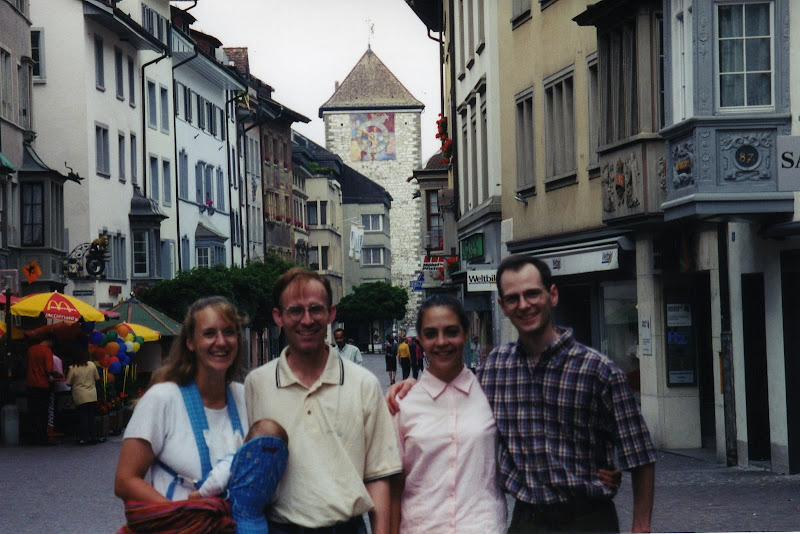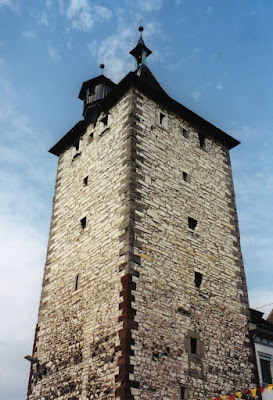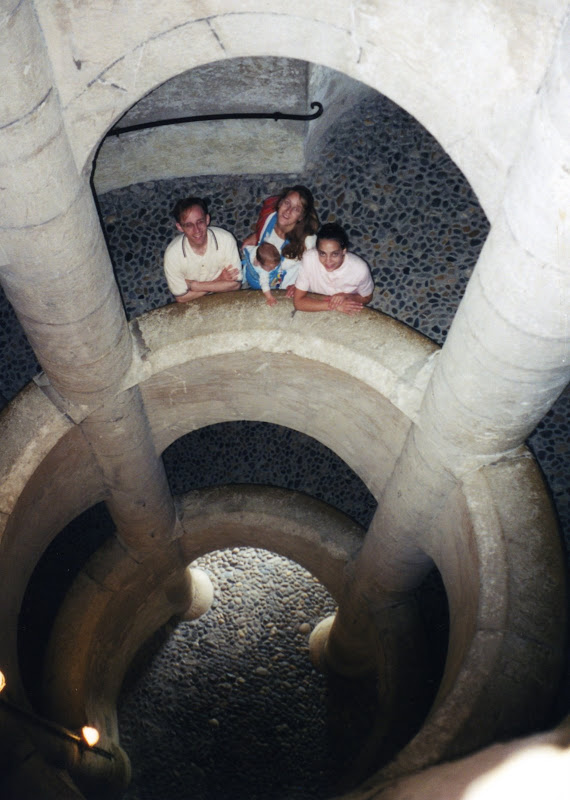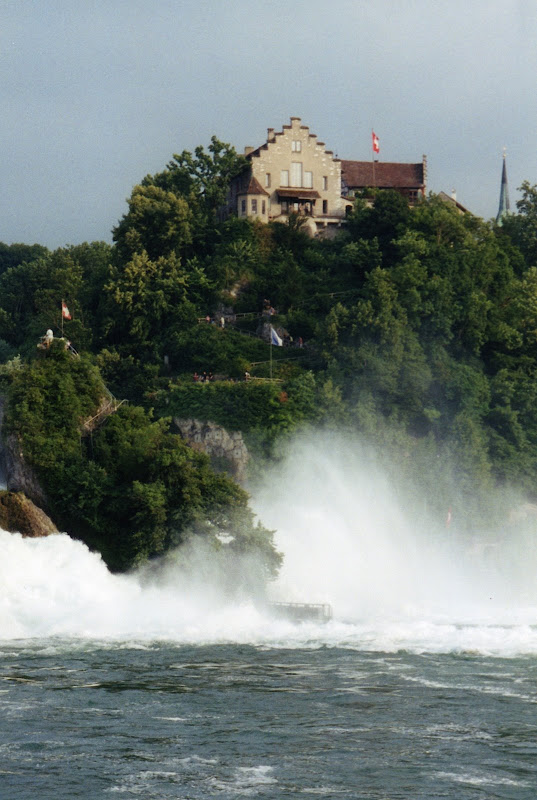
Our first real stop after picking up David and Angie was Schaffhausen, a charming town just over the Swiss border. No motor vehicles are allowed in the Old City, so we parked outside and hiked in. Narrow cobblestone streets led us between shops with gardenia-laced balconies.

Switzerland exceeded every stereotype I imagined. The city and surrounding countryside were meticulously manicured and picturesque. Ancient, well-tended churches were found at the center of each village, many with a tower sporting a brightly painted clock.


Towers ornament the city wall and its gates. One of these, the Obertorturm, is known from records as early as 1273, while another, the Schaubentorturm, dates back to at least 1361.


In old cities throughout Europe, the streets converge on plazas. Fountains are found in the center of many of Schaffhausen's plazas, most with a brightly painted medieval statue and free flowing drinking water.
On a hill above the city sits the fortress Munot. After exploring the city center on foot, we started up the long staircase to the fortress. As we climbed, the fortress loomed larger and larger, dominating the landscape. I found I could never fit it into a photograph, and so never got a good picture of it. From the outside, gray stones curve and join precisely, giving the fortress a solid, well-crafted appearance. The drawbridge, now permanently lowered, led us over a drained moat that now was home to a family of deer, and into an arched portal filled with darkness. Cave-like tunnels filled with still and cool air lead us to the center, where stairs then ascended to a round courtyard surrounded by towering gray walls, towers, and a balcony that overlooks the city.

From here, the city appears a jagged collection of tiled roofs. We saw the Rhine River flowing near the edge of town, and over the Rhine a modern looking bridge carrying cars, trucks, and trains to a tunnel that led straight through the center of a hill, leaving the countryside unspoiled. The traffic was thus discretely tucked away, like the gears in a watch or the blades in a pocketknife.

After descending a spiral ramp to leave the fortress, we made our way back to our car and then to a grassy hillside overlooking the Rhine, where we had a picnic.

We then drove a short distance to the Rhine Falls. The Rhine Falls seem more a part of imagination and romance than of the real world. The entire Rhine River crashes down through a narrow channel, surrounding several small islands. White torrents swirl and churn around the jutting crags, while the Laufen Castle looks down serenely from above. If I had seen a painting that truly captured the Rhine Falls, I would have thought the scene too fantastic to be true. Photos don't capture the sense of scale very well. Although it is the largest in Europe, the waterfall's size did not impress me as much as its beauty and mystique. We followed a scenic path around the falls, and viewed the falls from many angles, each one beautiful. From the riverbank, we saw a boat ferrying those who want to experience the heart of the maelstrom to a small island in the center of the falls, and on the island small figures climbing narrow stairs surrounded by the pounding flood.


After viewing the Rhine Falls from below, we climbed to the Castle Laufen, and enjoyed the view of the falls and the countryside.
No comments:
Post a Comment